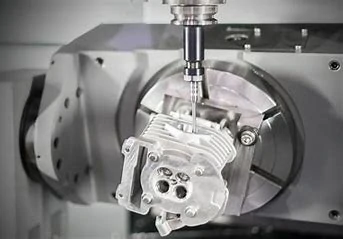Title: Disadvantages of CNC Processing of Aluminum Profiles
Introduction:
CNC (Computer Numerical Control) processing has revolutionized the manufacturing industry, including the production of aluminum profiles. While CNC processing offers numerous benefits, it is important to recognize that there are also certain disadvantages associated with it. This article aims to explore some of the drawbacks of CNC processing when applied to aluminum profiles.
1. High Initial Investment:
One of the major drawbacks of CNC processing for aluminum profiles is the high initial investment required. Acquiring and setting up CNC machines can be expensive, making it less feasible for small-scale manufacturing businesses or those with limited financial resources. The cost of CNC equipment, training, and maintenance can pose a significant barrier to entry.
2. Complex Programming:
CNC processing relies on computer programming to control the machines. The programming process can be complex and time-consuming, requiring skilled technicians with in-depth knowledge of CAD/CAM software. This adds an extra layer of complexity to the production process and may require additional training and expertise, further increasing costs.
3. Limited Flexibility:
CNC machines are designed to perform specific tasks based on their programming. While this level of automation enhances productivity, it limits the flexibility of CNC processing for aluminum profiles. Changing specifications, designs, or dimensions often requires reprogramming the machine, resulting in downtime and decreased efficiency.
4. Machine Maintenance:
Maintaining CNC machines, including regular inspections, lubrication, and calibration, is crucial for their optimal performance. However, routine maintenance can be time-consuming and costly. Additionally, any breakdown or malfunction can lead to prolonged downtimes, affecting production schedules and overall productivity.
5. Complex Fixturing:
To ensure accurate and precise machining, CNC processing of aluminum profiles often requires intricate fixturing. Developing and implementing suitable fixtures can be a challenging task, especially for complex profiles or irregular shapes. The process may involve trial and error, which can lead to increased setup time and potential material waste.
6. Dependence on Electrical Power:
CNC machines rely heavily on a consistent and reliable electrical power supply. Any disruptions in power can result in machine downtime, potentially leading to delays in production schedules and increased costs. Adequate backup power solutions need to be in place to mitigate the risks associated with power outages or fluctuations.
7. Skilled Workforce Requirement:
Operating and programming CNC machines for aluminum profile processing requires a skilled and experienced workforce. The shortage of skilled technicians proficient in operating CNC machines, particularly in remote areas or smaller manufacturing facilities, may pose a challenge. Businesses may need to invest in training programs or hire external experts, thereby increasing costs.
Conclusion:
While CNC processing of aluminum profiles undoubtedly offers numerous advantages, such as improved accuracy, precision, and efficiency, it is essential to consider the associated disadvantages. These include high initial investment costs, complex programming, limited flexibility, machine maintenance requirements, complex fixturing, dependence on electrical power, and the need for a skilled workforce. Recognizing these drawbacks allows manufacturers to make informed decisions regarding the adoption of CNC processing for aluminum profiles, considering their specific production needs and financial capabilities.
.webp)



